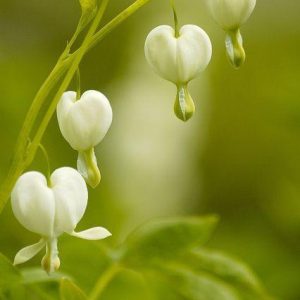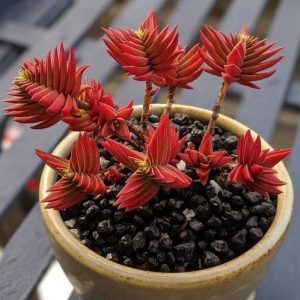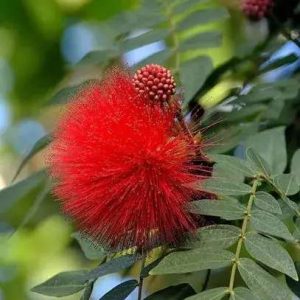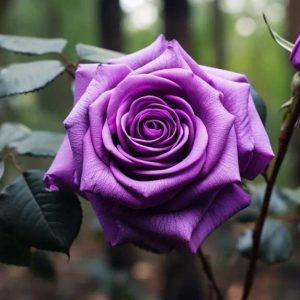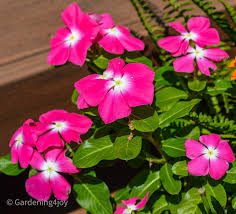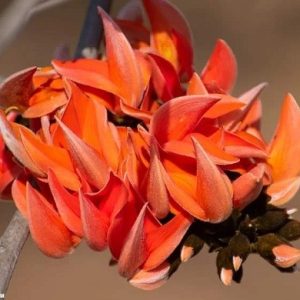Let’s assume you’re looking to fill a sunny spot in the yard with some old fashioned, sweet smelling, garden goodness. And since you’ve landed on this page, we’re going to assume you’re already grooving on lilacs but aren’t sure which kind is right for you. Let’s break the selection process down a bit and take a closer look at some of your options.
Ranging in height from 3 to 30 feet and blooming prolifically in late spring to early summer, lilacs come in 25+ species with thousands of cultivars, so it’s no wonder you’re overwhelmed. Determine whether you’re looking for a privacy screen, a formal hedge, an ornamental tree, or a small accent shrub before you start clicking around, and that will help you hone in on varieties that will work in your landscape.
Generally speaking, lilacs are categorized as a flowering shrub (between 6 and 15 feet tall), dwarf shrub (less than 6 feet tall), or tree (over 15 feet tall). While there is some overlap and gray area, for the purpose of finding the right lilac for the right spot, we’ll use those headings to help you sift through your options.
Lilacs are known for being easy to grow, resilient, laid back. But lilacs do require plenty of sunshine, adequate drainage and good air circulation in order to thrive, so make sure your site can meet those needs before choosing a plant from this genus.
Pay careful attention to your space limitations, as some lilacs will grow very large, very fast. And make sure they will grow well in your region. Most lilacs are hardy in zones 3-7, but there are a few that can handle colder temps and a few that can handle higher levels of humidity. Zero in on those cultivars if you live in zone 2 or 8, and you’ll increase your odds of successful growth.
The horticultural definition of a shrub is a multi-stem, woody plant that does not exceed 15 feet in height. While some lilac species, particularly those in the common lilac family (Syringa vulgaris), can soar to heights of 20 feet or more, we still call them shrubs due to their bushy personalities. If you’re looking for a mid-large sized, lilac shrub, here are a few to consider:

- Bloom time: Early spring
- Size: 6-8 feet tall and wide
- Flower color: red to purple
- Use: Accent or backdrop
Wonderfully scented, this shrub’s 15-inch blooms are purple in hue and open a week or so before most common lilac species. This timing makes Declaration a good choice for mixed lilac borders, when a month or two of continuous lilac joy is the goal.
Growing 6-8 feet tall and wide, it has a slightly smaller stature and rounder habit than many of its lilac peers. Use it as an accent or backdrop planting for a dramatic effect.

- Bloom time: late spring
- Size: 10 feet tall and wide
- Flower color: cream to yellow
- Use: Accent or mixed border
Primrose explodes in late spring with massive, 10-inch panicles that are creamy yellow in hue. Growth is fast and large, with a 10-foot spread at maturity. Dark, heart-shaped leaves provide nice contrast. With a profile that is generally considered cottage or classic, this one works equally well in a group or as a standalone.

- Bloom time: Early spring
- Size: 10 feet high, 13 feet wide
- Flower color: white
- Use: Locations with high humidity
Abundant, white panicles cover this rounded specimen in early spring and fill the air with a sweet scent. Growing 10 feet high and 13 feet wide, Betsy Ross is known for being resistant to powdery mildew – a common lilac foe. It is also one of the few lilac cultivars that can be grown in southern climates, and it’s hardy to zone 8.

- Bloom time: Late spring to early summer
- Size: 5-7 feet tall, 10-15 feet wide
- Flower color: Pink
- Use: Low hedge or border planting
This littleleaf lilac has a bushy, spreading habit and a dense branch structure. Although it only gets 5-7 feet tall, it can be 10-15 feet wide at maturity. Tubular pink flowers cover the shrub in late spring to early summer and offer a light, pleasant scent. If sheared after blooming, it may flower again later in the season.
Its small, ovate leaves can be sheared and shaped, making this a good choice for a low hedge or border planting. This cultivar is also slightly more heat tolerant and mildew resistant than your average lilac and is hardy to zone 8.

- Bloom time: Late spring
- Size: 10-12 feet tall, 6-8 feet wide
- Flower color: wine colored
- Use: Ornamental screen or singular accent
An upright shrub with open, vase-like branches, this cultivar grows 10-12 feet tall and 6-8 feet wide. Its foot-long, narrow panicles are wine colored and extremely strong scented, and they put on a show for 3-4 weeks in late spring, making Spath one of the longest blooming lilacs available.

- Bloom time: Late spring
- Size: 8-10 feet tall and wide
- Flower color: Pale purple
- Use: Backdrop, cottage vibe
Growing 8-10 feet tall and wide, this hybrid is prized for its abundant flowers. While common lilacs send blooms out from their tips, Lilac Sundays produce showy, pale purple flowers all along their branches in late spring.
The heavy blooms create a graceful, arching branch pattern and pour on the charm in borders and screens. This would also be a great backdrop for the cutting garden, since flowers are so plentiful.

- Bloom time: Late spring to early summer
- Size: 6-12 feet tall and wide
- Flower color: Rosy pink
- Use: Locations with extreme conditions
One of the few lilacs that extends the genus’ hardiness to zone 2, Miss Canada can withstand extremely cold temperatures and still pack a floral punch.
Blooming in late spring to early summer, this hybrid features tubular rosy-pink blooms with a delicate scent and grows 6-12 feet round. Dark green, lance-shaped leaves hold their color well in summer and turn brilliant yellow in fall, giving this one 3-season interest.

- Bloom time: Late spring
- Size: 8-10 feet tall, 6–8 feet wide
- Flower color: White to blush
- Use: Accent or border planting
Double white florets with a hint of blush appear in late spring to give this cultivar a dramatic presence in the landscape. Growing 8-10 feet tall and 6-8 feet wide, Moscow’s form is vase-like, and its branch structure is open.
Light green, heart-shaped leaves contrast nicely with surrounding plants that have dark foliage. It is also known for being powdery mildew resistant, making it a good choice for zones with considerable humidity.

- Bloom time: Early summer
- Size: 10 feet tall, 6 feet wide
- Flower color: blue
- Use: Formal gardens, ornamental specimen
With oversized, wedgewood blue panicles that grow in clusters against dark green foliage, this one is prized for its unique color and formal stature. Maturing at 10 feet tall and 6 feet wide, Lincoln’s branch structure is vertical and rigid, making it a go-to backdrop plant.
This cultivar was introduced in 1916 and was featured heavily in presidential gardens, which is why it received its name. It’s a fast grower with a delightful scent and blooms in early summer.

- Bloom time: Early summer
- Size: 12 feet tall, 8 feet wide
- Flower color: Purple and white
- Use: Tall hedge or screen
Maxing at 12 feet tall and 8 feet wide, Sensation shows off in early summer and is valued for its variegated blooms. Its rich, purple petals are edged in white, making it one of the few, true, bi-color lilac cultivars.
Dark, dense foliage and large leaf size make it well-suited to hedge or foundation plantings. Scent is not as strong as other lilac varieties, which makes it attractive to those who find it overpowering.
In lilac language, anything that doesn’t get larger than 6’ high qualifies as a dwarf. These lilac varieties are typically bred on rootstocks that produce smaller, denser, woody branch structures, but they still pack a powerful flower punch.
Most dwarfs can be kept as small as you’d like with regular, proper pruning. This makes dwarf lilacs a solid choice for smaller landscapes or accent plantings. Dwarf varieties are also the best to choose if you plant to container plant your lilac. Here are a few tried and true varieties to consider:

- Bloom time: Mid to late spring
- Size: 5-7 feet tall, 7 feet wide
- Flower color: Purple to pink
- Use: Foundation plant or low hedge
Commonly known as Dwarf Korean Lilac, Palibin has a compact, round shape that’s slightly wider than it is tall. It maxes out at 5 feet tall and 7 feet wide.
Producing dense clusters of purple buds that become a profusion of tiny pink flowers in mid to late spring, this dwarf has small, glossy leaves that can be shaped easily. Use it as a foundation plant or plant them close together and shear into a low hedge.

- Bloom time: Late spring to early summer
- Size: 3-4 feet round
- Flower color: Purple to pink
- Use: Mixed border, accent
Marketed as ‘reblooming’ lilacs under several different brand names, these hybrids come in several shades of purple and pink. They boast a diminutive, 3-4 foot round shape and bloom for an extended period of 3-4 weeks in late spring/early summer.
Foliage is unremarkable, but tidy, making this a good choice in a mixed border or foundation planting. Shear them immediately after blooms have faded and you will likely have another flush of flowers in mid-summer.

- Bloom time: Early spring
- Size: 6 feet tall and wide
- Flower color: Lilac to pale pink
- Use: Small group or mixed border
Maxing at 6-feet tall and wide, Miss Kim is the common lilac’s little sister. With similar blooms and early spring timing, this small shrub can deliver the same classic style in smaller spaces. Even though it’s a dwarf specimen, Miss Kim’s lilac to pale pink flowers are large and heavenly scented.
Leaves are dark green and turn burgundy in fall, giving this one three season interest in the landscape. Use it as a single accent by the patio or in a group along the walkway.

- Bloom time: Mid to late spring
- Size: 5-6 feet
- Flower color: Wine
- Use: Informal hedge or mixed border
Informally referred to as the ‘Tinkerbelle’ lilac, this dwarf will reach 5-feet tall at maturity with a spread of 5-6 feet. Featuring early red buds that burst into 5-inch long, wine colored panicles in mid to late spring, Tinkerbelle will add a splash of color wherever it’s planted.
Leaves are large, dark, and oval, giving it a nice presence even when flowering is complete. Perfect as an informal hedge, mass planting, or in a mixed lilac border.

- Bloom time: Late spring
- Size: 4-6 feet tall and wide
- Flower color: blue
- Use: Accent or backdrop plant
An upright shrub with light green, heart-shaped foliage, Wedgewood Blue grows 4-6 tall and wide. Lilac-hued buds open to light blue panicles on arching branches in late spring and fill the air with a light perfume. This cultivar works well in the back of a perennial bed or as an accent plant in a smaller setting.

- Bloom time: Late spring, mid summer
- Size: 4-6 feet tall, 5-6 feet wide
- Flower color: lavender-pink
- Use: Foundation plant or accent
Light pink, star-shaped blooms completely cover Josee in late spring, making this one a dwarf favorite. In cooler climates, this shrub will flower again later in the season, although not as prolifically. Reaching widths of 4-6 feet and heights of 5-6 feet, Josee has small, dark green leaves and a dense, round habit. Use it in a mixed shrub border or as a foundation planting.
Lilacs that exceed 15 feet in height and feature a single trunk or a multi-stem trunk with a higher canopy are typically considered flowering trees. In non-botanical talk, lilac trees fall into one of three categories (Japanese Tree, Chinese Tree, or Amur Tree), each with its own profile and unique characteristics.
Although Chinese and Amur are actually subspecies of the Japanese Tree Lilac, this is the easiest way to keep them straight and we will examine them accordingly:
Packing a wallop in the landscape with clusters of fragrant (sometimes overpowering or off-putting), white flowers that are 10 inches wide and up to a foot long, Japanese tree lilacs fill the gap nicely between spring and summer flowering trees.
Sold in both single and multi-stemmed varieties, they can reach heights of 30 feet and spreads of 15-20 feet. With an attractive shape, reddish bark, and white trunk speckles, Japanese tree lilacs offer four-season interest. They are equally at home in the city, on a small property, or on the rambling grounds of a grand estate. Popular varieties include:

- Bloom time: early to mid summer
- Size: 25 feet tall, 20 feet wide
- Flower color: white
- Use: Ornamental
Known for having stocky branches and a more compact canopy than other Japanese tree lilacs.

- Bloom time: late spring
- Size: 25 feet tall, 15 feet wide
- Flower color: cream
- Use: Privacy screen or small space ornamental
Selected for its narrow, pyramidal form, Ivory Pillar is significantly taller than it is wide.

- Bloom time: early summer
- Size: 20-30 feet tall, 20-25 feet spread
- Flower color: cream to white
- Use: Urban streetscapes, park plantings
A smaller cultivar of the species, Summer Snow has a reputation for being tolerant of air pollution. Less fragrant than other lilacs.

- Bloom time: early summer
- Size: 20-30 feet tall, 15-20 feet spread
- Flower color: ivory
- Use: Part-shade locations
Known for its variegated foliage, this cultivar features glossy green leaves with cream colored margins and large ivory flowers.

- Bloom time: Late spring to early summer
- Size: 20 feet high, 15 feet wide
- Flower color: White
- Use: Shade tree or accent
- Chinese Tree Lilacs
Smooth, steel-gray bark gives this one a striking winter profile. Habit is dense and upright.
Also early summer bloomers, Chinese tree lilacs send out yellow-white, honey scented flower clusters en masse. Smaller in size at 10-20 feet high and 10-15 feet wide, with a more delicate leaf and branch structure, this species is often selected for its unusual bark characteristics and winter interest. Its cinnamon to amber colored bark exfoliates in sheets and peels later in the season.

- Bloom time: early summer
- Size: 15-20 feet tall, 10-15 feet spread
- Flower color: creamy yellow
- Use: Urban streets and parks
Adaptable to both acidic and alkaline soil conditions, Beijing Gold also tolerates drought and road salt, making it a popular choice for cityscapes.

- Bloom time: late spring to early summer
- Size: 20 feet tall, 10 feet wide
- Flower color: creamy white
- Use: Under power lines, low privacy screen
Known for being multi-stemmed with a low canopy and a tolerance for part shade. This unique tree variety has become more popular as a privacy lilac over the last decade or so. It can survive in a number of environments, and is relatively low maintenance.

- Bloom time: Early summer
- Size: 10-12 feet tall and wide
- Flower color: light yellow
- Use: Cottage garden or small urban site
Considered the Chinese tree lilac with the most pleasing scent, it’s also known for being a slow grower with an oval crown. The yellowish white blooms are beautiful, and this is one of the more popular small lilac trees.

- Bloom time: Late spring to early summer
- Size: 6-8 feet tall, 4-6 feet wide
- Flower color: white
- Use: Small ornamental
Native to Korea and eastern Russia, this is the smallest lilac tree species, maxing out at 6-8 feet tall and 4-6 feet wide. Flower panicles are white and prolific in early summer with a pleasant scent. Amur’s habit is rounded and more shrub-like than the other tree lilacs. A good choice for small properties.
Whether you’re well-acquainted with lilacs and their glorious, oversized blooms or just learning to pick them out on your strolls through the neighborhood, you are probably familiar with their fragrance. Sweet and powerful, with a heavy blast of nostalgia for a simpler time, lilacs usher in the summer season with a sensory bang.
If you’re considering adding them to the landscape, make sure you have the right growing requirements (sun, airflow, and good drainage), then determine whether you’re looking for a shrub, dwarf shrub, or tree. Take some time getting to know their sizes, bloom times, flower colors, and branch structures.
If conditions are optimal and your lilac is properly cared for, it might live a hundred years or more in the location where it’s planted. Keep that in mind as you make your selection. You’re installing a living legacy of sorts, which is pretty darn cool.
